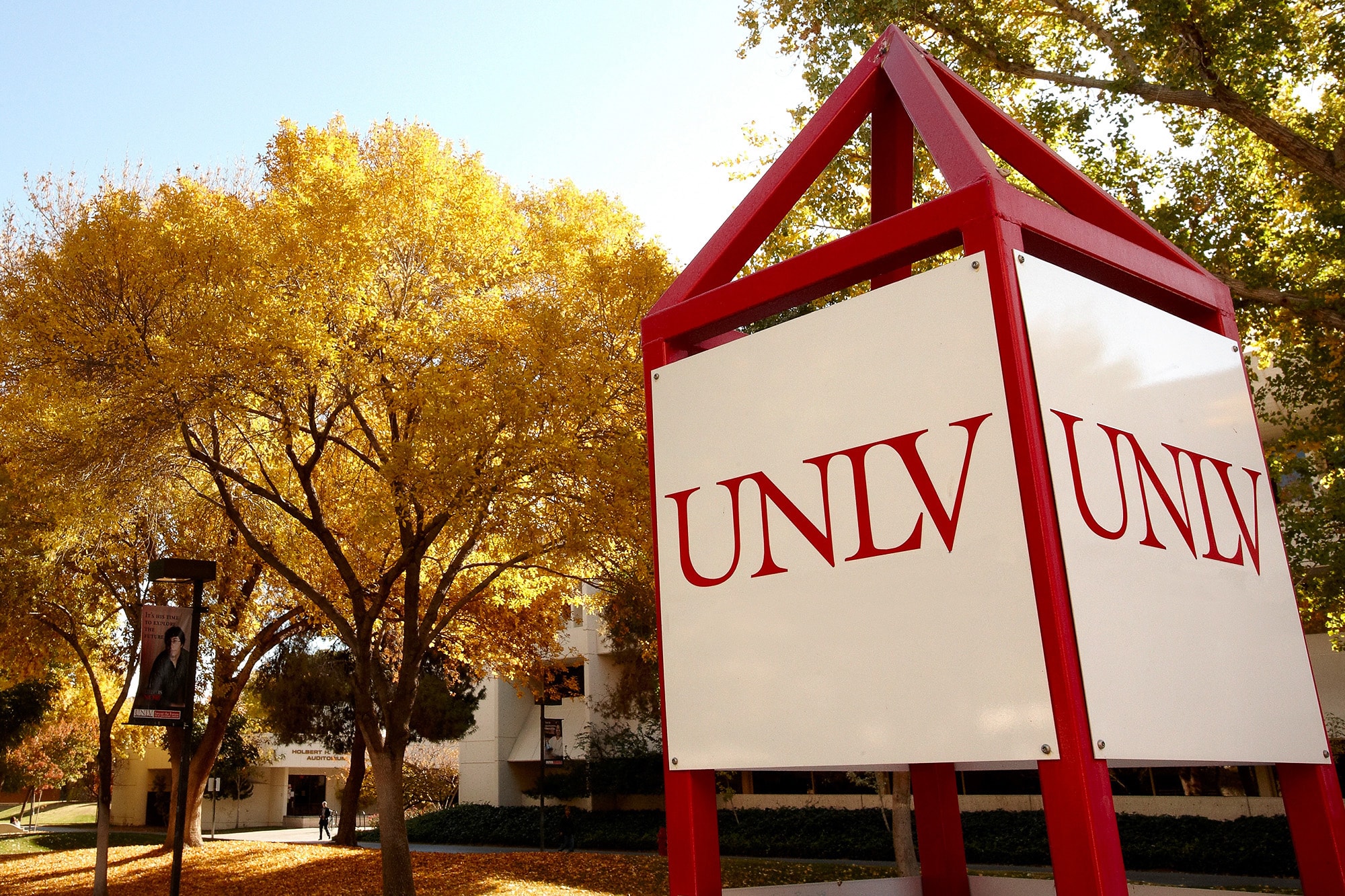UNLV unveiled its new solar energy technology today, demonstrating additional and modified equipment that will help researchers refine the functioning of solar power systems.
Part of a federally funded project, the UNLV Center for Energy Research equipment enables faculty to instruct their students on solar energy technology engineering and design. Students perform research, operate the systems, and troubleshoot any problems that may develop.
"We are extremely pleased that UNLV is involved in conducting research on this very important and useful technology," said UNLV President Carol C. Harter. "Through several dynamic partnerships, the Center for Energy Research is helping the community and region explore viable energy options. I am proud to see such work under way."
Harter expressed her gratitude to the various government agencies that have supported the project, including the Nevada State Office of Energy, the Department of Energy's National Renewable Energy Laboratory, and the office of U.S. Sen. Harry Reid. She also praised the private engineering firms involved in the project - Amonix and SAIC - for their support of university research.
UNLV unveiled its original solar dish power generation system in August 2001. A new system has been constructed, and one of the existing units has now been significantly modified. Each is now a concentrating photovoltaic power system.
Robert Boehm, distinguished professor of engineering and the project's principal investigator, said solar energy research is perfectly suited to UNLV due to the abundance of sunshine in Las Vegas. He added that he is pleased that the project gives students such a wonderful opportunity to conduct research.
"This project enables students to engage in the best type of collaborative learning experience," he said. "They are involved in beneficial research while acquiring valuable knowledge."
Eric Sandgren, the dean of the Howard R. Hughes College of Engineering, said the new project is another highly visible demonstration of the university's role in the community as a leader in research, educational, and outreach activities.
"The new facility will provide state-of-the-art capability to help us move toward energy independence and will help us attract additional research activity," Sandgren said. "It helps us recruit the most highly qualified students."
<hr size="1" />
<div align="center"><strong>Fact Sheet</strong></div>
<strong>UNLV's Solar Power Technology Research Site</strong>
History: UNLV unveiled its original solar dish power generation system in August 2001. The system continues to serve as the focal point of a two-year, federally funded project that enables engineering faculty to demonstrate and refine the functioning of the solar power system and to instruct UNLV students in solar energy technology engineering and design.
Location: The north side of the UNLV campus, along Flamingo Road, just east of the Stan Fulton Building
Previous Equipment: The two original dish-Stirling systems concentrated solar energy from an array of mirrors that was focused on a Stirling engine - a distant cousin to the automobile engine that uses solar energy instead of gasoline.
New Equipment: A new system has been constructed, and one of the existing units has now been significantly modified. Each is now a concentrating photovoltaic power system. Photovoltaic cells ("solar cells") look like small pieces of dark glass, and when the sun shines on them, an electrical current is produced.
Power Produced: Each of the units produces about 25 kilowatts, and this is enough power to furnish five to 10 houses with electricity. The electrical power produced is connected to the Nevada Power grid.
Size: The "sign board" portion of the new Amonix unit is 44 feet high and 55 feet wide. The modified SAIC unit is about 50 feet in diameter and stands about 55 feet tall.
Student Involvement: Students perform research, operate the systems and troubleshoot any problems that may develop.
Partnerships: UNLV is working with a number of government agencies and private businesses on this project, including the Department of Energy, which has contributed $1.3 million to the project through the National Renewable Energy Laboratory; the engineering firms Amonix and SAIC, which designed the units; and Nevada Power, which set up the original transformers and connections.
About Solar Cells : They offer nearly trouble-free power generation but tend to be expensive. Concentrating photovoltaic systems allow use of more efficient cells as well as fewer cells. Concentrating systems like the ones to be used in the UNLV project can improve efficiency two to three times.
Related Research: Research at the "solar energy site" will inform other research on such projects as the zero-energy house, a planned solar plant in Eldorado Valley, and a solar-powered hydrogen-refueling site.



